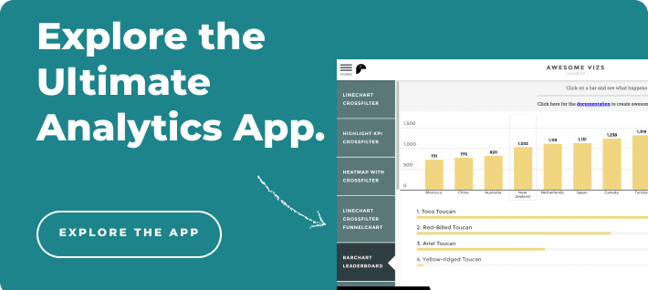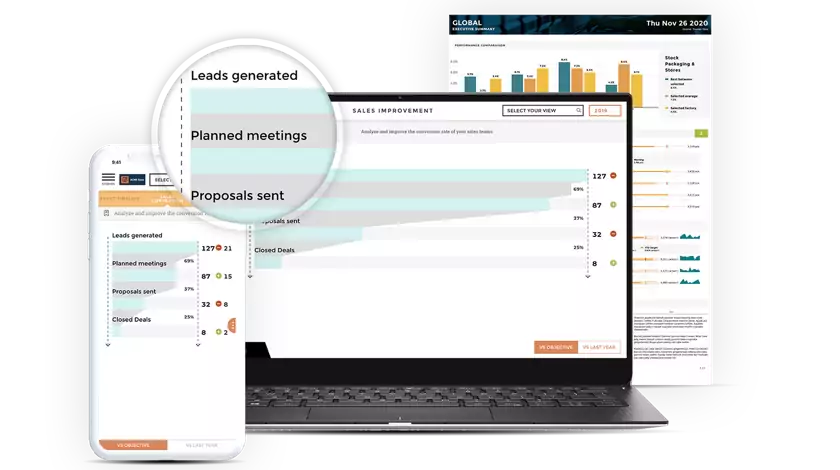
One of the wonderful things about the Software as a Service (SaaS) model is that it’s easier than ever before to not only start a business, but to start one that offers a diverse range of products and services to a diverse range of customers. The SaaS industry is booming largely due to the fact that it's possible for anyone to be successful equipped with nothing but a laptop and a Wifi connection. And while results in the SaaS industry are through the roof, it's important that they are measured; that’s why we’ve put together this article on some of the essential SaaS sales metrics that you should be tracking if you want to be successful.
We hate to state the obvious, but it’s a good place to start: virtually any high-performing, profitable business today relies heavily on data.
Data-driven companies that are guided by analytics are the only ones who are able to have a meaningful understanding of their forecasts, processes, and results. Perhaps more importantly, they’re also the only ones who are able to leverage that understanding to drive positive change across their organizations.
This remains true when considering SaaS sales metrics, and so tracking these metrics is a vital part of any successful strategy.
Which SaaS sales metrics should you be tracking?
We'll jump right into some of the key SaaS sales metrics you should be tracking, but before we do...
A (quick) overview of SaaS Sales
When it comes to selling in the SaaS space, the most important SaaS sales metrics, unsurprisingly, vary (if only slightly) from other industries. The subscription-based model that most SaaS businesses offer generates sales metrics that are unique to the space.
If you’re not familiar with SaaS sales…you probably are.
Have a Spotify subscription? That’s SaaS.
Netflix and chill? Also SaaS.
SaaS affects almost everyone these days, from the way we consume information to how we travel (think Uber), so it's no surprise the desire to understand and leverage SaaS sales metrics is high.
So, without further ado, we’re going to look at some of the most important metrics for businesses to be tracking and measuring.
1. Recurring revenue
Recurring revenue is, simply put, the amount of money brought in by a business that is expected to continue into the future (due to anything from customer loyalty to subscription-based contracts, as is generally the case in the SaaS sales context).
There are two key recurring revenue sales metrics that are generally important for SaaS leaders to understand:
- MRR (monthly recurring revenue)
- ARR (annual recurring revenue)
The time periods through which you can evaluate your recurring revenue can obviously be changed. You may therefore elect to do something different, such as calculate quarterly recurring revenue, but these metrics are generally thought of to be the most important.
In case it's not obvious, recurring revenue is one of the most meaningful indicators of the financial health and growth potential of a SaaS business: it indicates the reliability of the flow of money brought in by customers. Recurring revenue is, of course, interesting for SaaS salespeople, but also for executives, investors, and most everyone in between.
Calculating ARR and MRR is simple. You can use this formula:
Recurring Revenue = total paying customers X average recurring income per account (over the given time period)
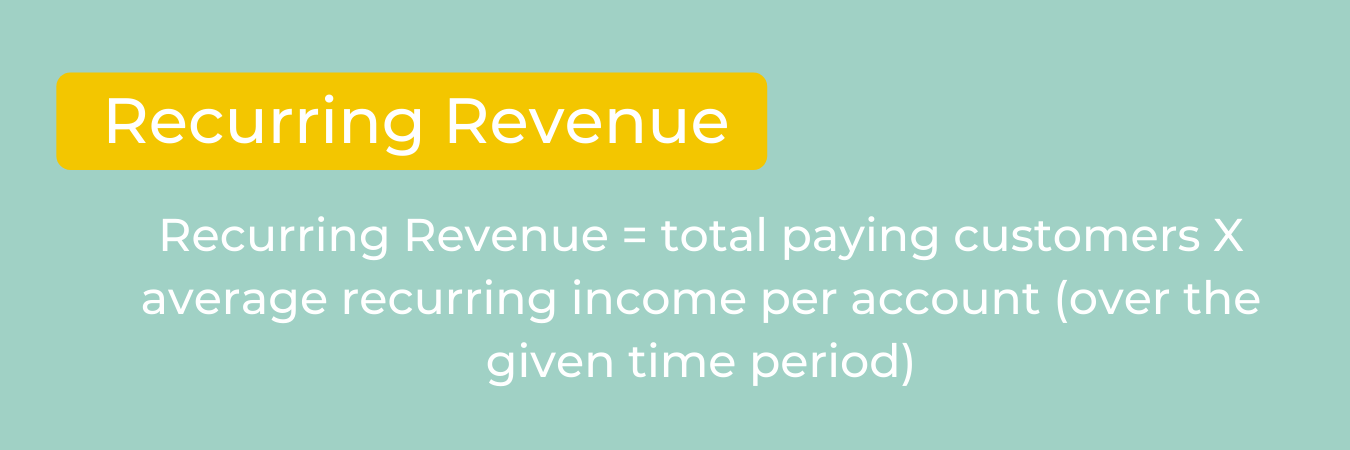
One of the reasons that recurring revenue is so impactful is that if new customer acquisition were to cease entirely, there’s still a possibility that you could sustain your SaaS business solely with your existing customer base.
In the SaaS sales context, recurring revenue is therefore foundational.
Growth in recurring revenue figures indicates increased growth or increases in deal sizes, so while it reflects consistency it can also shed light on how well a SaaS business is at acquiring customers, engaging them, and retaining them.
Recurring revenue also helps drive strategic decision-making, such as whether or not a SaaS team can invest more heavily in R & D or spend more on hiring top talent.
Honorable mention: another interesting SaaS sales metric to track is New Customer Recurring Revenue. This reflects the growth in recurring revenue (either month-over-month or year-over-year) that’s generated from new customers. New Customer Recurring Revenue is one of the key indicators that SaaS sales teams can use to track business growth.
2. Customer Acquisition Cost

Customer Acquisition Cost (CAC) is, essentially, a measure of how much a SaaS business pays to acquire new customers.
CAC helps one to understand how effective a business’ marketing and sales efforts are. The importance of tracking this SaaS sales metric is obvious: any successful business needs customers.
Understanding and leveraging CAC helps SaaS companies become more efficient and increase profitability, and also frees up additional resources to invest in the areas to which they are most called.
The analysis of CAC also drives optimization as it can uncover who exactly the ideal customers of a SaaS business are.
CAC helps illuminate those that are more likely to convert into paying customers, the pains that a business solves, as well as which customers require the least expenditure to acquire (all of which usually go hand-in-hand).
Aligning CAC with the understanding of other key customer acquisition metrics will gradually reduce acquisition costs, increase the volume of paying customers, and drive more success at the business level.
To calculate CAC, you can use the following formula:
CAC = [total costs of marketing and sales] / [total number of customers acquired]
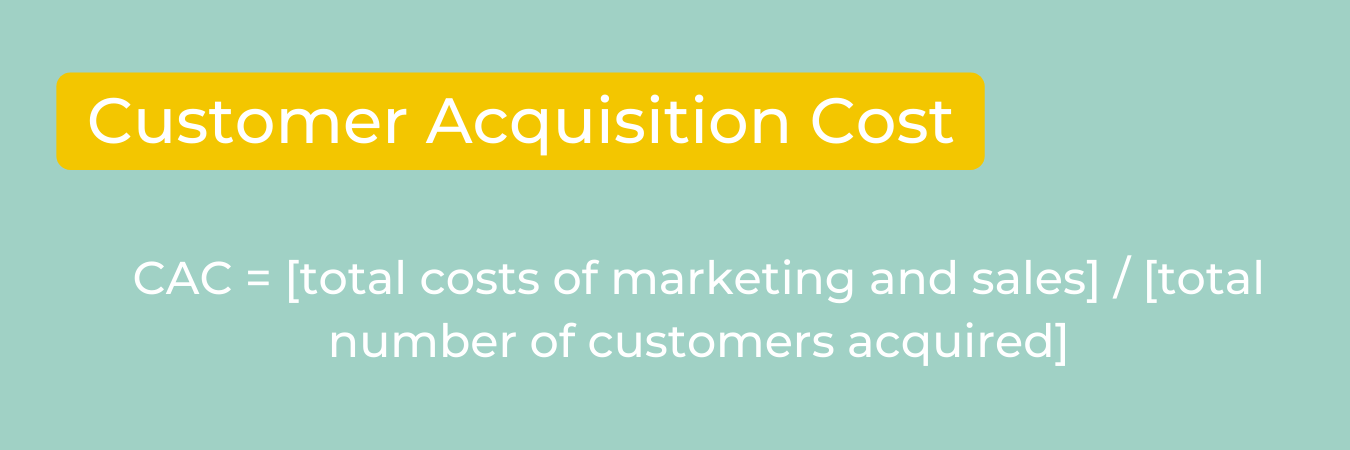
3. CAC Payback Period
The CAC payback period reflects the time it takes to generate ROI from your original CAC.
CAC Payback Period = [total costs of marketing and sales] / [total number of customers acquired]
CAC payback is important to analyze because it provides a more holistic picture of growth and revenue, and can also help you optimize your pricing strategies.
For example, if you run your SaaS business on a tiered-pricing model (e.g. multiple pricing tiers) as many do, you can better understand the efficiency and validity of each one.
4. Conversation Rate
Conversion rate is another key SaaS sales metric that helps analyze the rate at which a SaaS sales team converts leads into paying customers.
Conversion rates are vital to understand the efficiency and trajectory of both sales and marketing teams.
In the SaaS context, it's helpful to benchmark the conversion rate of your team against industry standards. There are lots of resources you can use as a starting point: we think this one, from First Page Seen, to be helpful.
Once you calculate your conversion rate, it's important to consider a few things, including:
- Effectiveness: Are your sales and marketing efforts working? If a specific channel or lead source has particularly low conversion rates, for example, it's a good indication that your money may be best spent elsewhere or that there is fragmentation between your marketing and sales teams.
- Lead quality: analysis of conversion rates helps to determine the quality of leads generated from marketing. Not only should you look at the conversion rates, but the quality of those conversions: are the deal sizes that these leads bring in close to your targets? Are they aligned with your ideal customer profile (ICP)? And so on…
Conversion rates can provide teams with a litany of improvements to make.
They can, for example, help you determine if your targeting is too broad, if your sales team needs additional training, or if you need to redesign your website because the traffic you’re generating isn’t turning into leads.
Most simplistically, the conversion rate is an important SaaS sales metric in optimizing marketing and sales efforts. With higher quality leads and higher conversion rates comes more business growth!
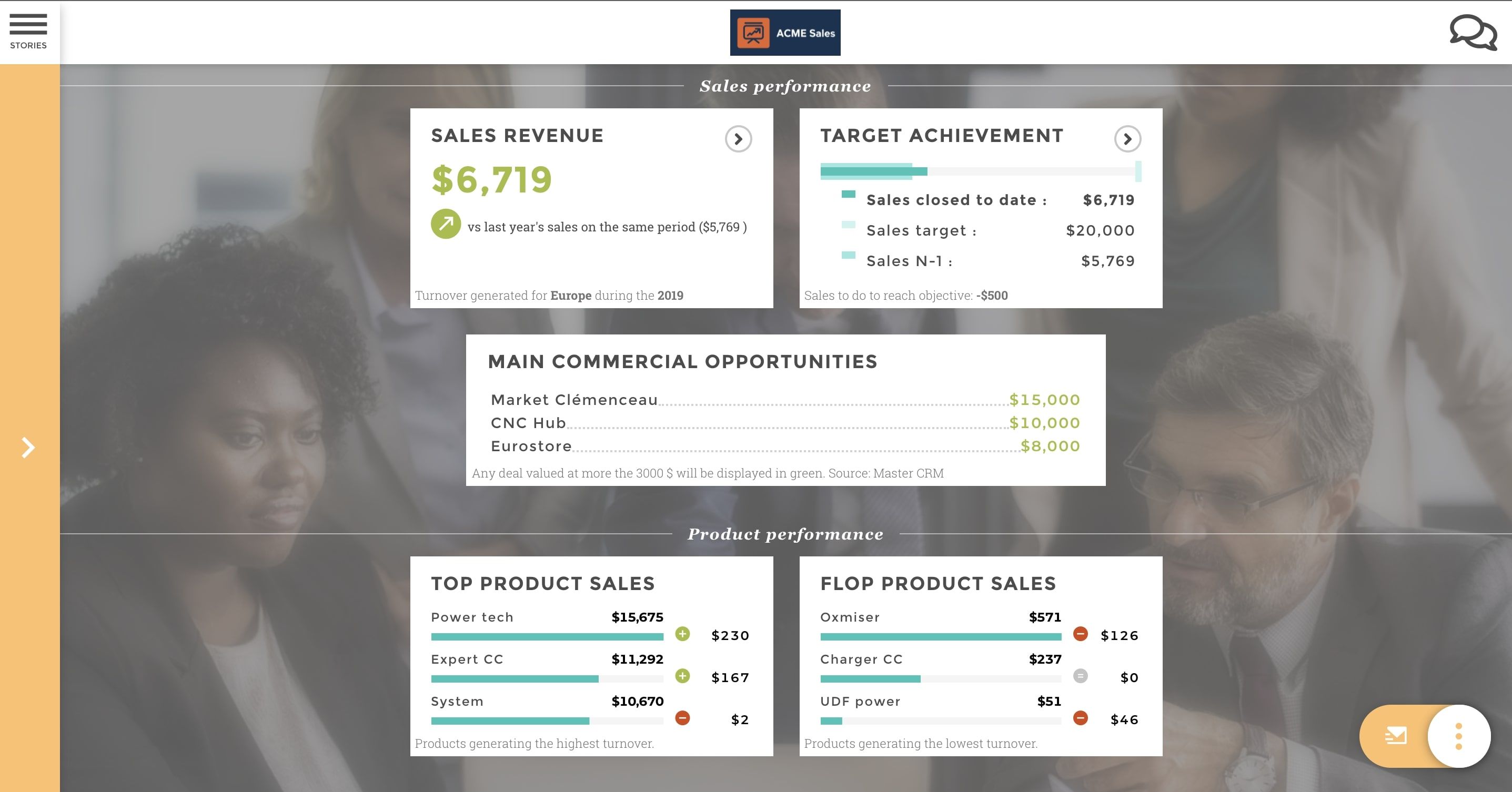
5. Customer Lifetime Value (CLTV)
Customer Lifetime Value (CLTV) is without a doubt one of the most important SaaS sales metrics for teams to consider, one that puts an emphasis on a business's current customer base.
CLTV is, in essence, the amount of revenue generated from a single subscribing customer over the course of their time with a company. While CLTV is an important sales metric, it’s also a key indicator used in marketing management.
CTLV accounts for recurring subscription costs, as well as the average up-sells and cross-sells associated with customers during their subscription.
Customer lifetime data is, probably obviously, a critical component of profitability. One of the reasons it's so important is rooted in the simple fact that it’s easier (and generally cheaper) to resign or upsell existing customers than it is to acquire new ones.
That’s why increasing CLTV is one of the most important things for SaaS teams to focus on: it helps you increase revenues, stability, and improve your offerings (addressing customer needs will create more robust products and better relationships with your customer base).
6. Churn Rate
We had to throw this one in there.
Churn rate is something that few actually enjoy looking at because it's often a red flag that you’re doing something wrong. Churn rate refers to the percentage of one’s customers that either cancel or don’t renew their SaaS service/subscription.
It’s virtually impossible to avoid some level of churn, especially with the competitive nature of the SaaS space, but any drastic increases in customer churn are tremendously important to monitor.
Churn is a strong indicator of customer satisfaction and experience and is something that should be leveraged to improve both products and the customer management side of a SaaS business.
Churn rates can also be leveraged outside of the customer success function. For example, marketing teams could look at churn to assess whether they’re making adequate efforts to incentivize customers to continually subscribe.
Ultimately, churn is a great way to identify, fix, and prevent problems from occurring.
7. Monthly Active Users

Perhaps one of the most simplistic SaaS sales metrics, active users reflects the total number of users or customers that are engaged with a SaaS product/service during a given time period.
The active user metric is usually reflected as Monthly Active users, but you can calculate this on a time period that is most relevant to your business.
Monthly active users serve as an indicator of business performance and growth, as well as of engagement. Having a high subscription figure, for example, is very different from having a customer base that is using and engaging with your product regularly.
Active user counts are often analyzed in conjunction with churn rate, as the two are generally tied quite closely together.
Active user counts are another way to determine product quality; engaged customers are the ones that are more likely to renew, pay more, and refer your SaaS business to their networks.
8. Lead Velocity Rate
Lead velocity rate (LVR) measures the growth of leads over time. As SaaS marketing improves, LVR will inherently increase: more leads equals more opportunities, which subsequently translates to more revenue.
Lead velocity rate helps SaaS teams predict growth, strategize their marketing and sales efforts, and helps optimize existing channels. LVR is a good indicator of whether or not the demand for your solution is increasing. One way to calculate LVR is reflected in the following formula:
LVR = [number of leads this month - number of leads last month] / [number of leads last month x 100]
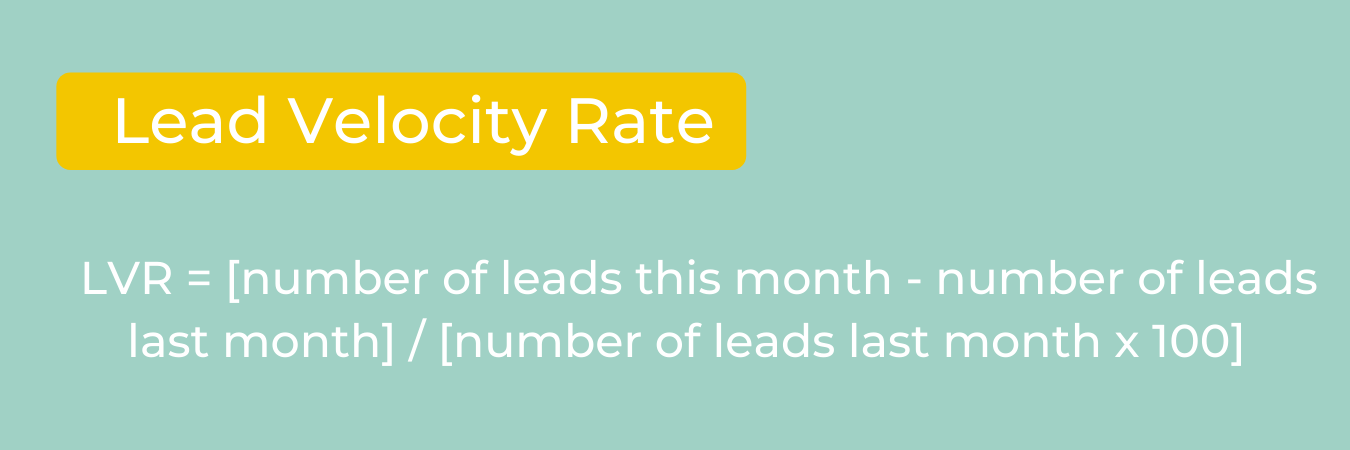
While things like seasonality can certainly affect your LVR, it is important to keep an eye on taking any necessary actions to bridge gaps in lead generation vs forecasts, and can also uncover issues in your sales process (if, for example, LVR increases but MRR doesn’t).
While the SaaS sales metrics that we’ve covered in this article don’t encompass everything that successful teams should track, we hope it provides you with a good foundation to become more data-driven and, ultimately, successful. Good luck!


